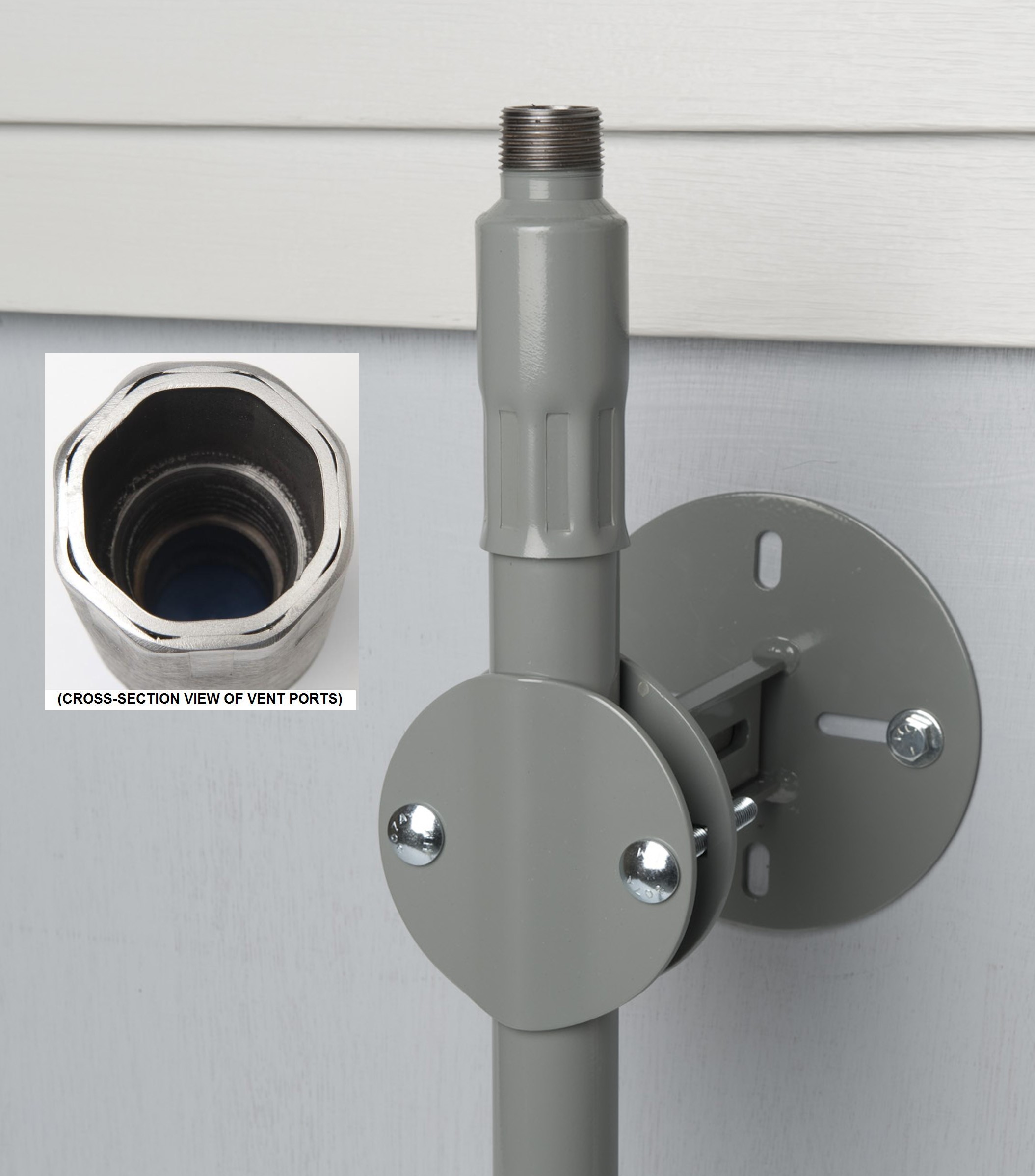July 2009 Vol. 236 No. 7
TechNotes
New Vented Service Riser Designed For Natural Gas Delivery

Energy Control Systems, Inc. (ECSI) says it has developed and has applied for a patent for a new service riser designed to identify and vent leaking fuel gas.
The ECSI-VENT™ service riser is used to transport pressurized gas from an underground supply line to an aboveground delivery point. The riser is said to be specifically designed to allow fuel gases that may leak along a service line or at an underground compression or stab connection at the riser to be vented to the atmosphere.
James M. Royston, president of the Pittsburgh, PA-based company, says the unique design of the riser’s “transition head” permits gas that may accumulate in the space between the carrier pipe and the riser’s protective casing to vent safely to atmosphere. The riser is available with either a flexible or a rigid casing.
Royston said it is a generally accepted premise that leaking fuel gas can migrate along existing pipelines. In cases where such migration occurs along a service line leading toward a structure, the sub-surface accumulation of gas in the vicinity of that structure can have a potentially harmful or, perhaps, devastating result. The exposure to the risk associated with such leak migration can be reduced significantly through the use of a service riser that is designed to vent the accumulated gases harmlessly to atmosphere.
Royston said that with today’s factory-assembled “transition” style risers, the connection from the service line to the riser is made underground and frequently includes the use of a compression coupling or a stab-type fitting. According to Royston, while compression or stab-type fittings are statistically very reliable, there are instances where leakage could occur as the result of scratched PE pipe, improper pipe preparation or inadequate tightening of a compression coupling. When such a leak does occur, it is generally low volume in nature.
However, according to Royston, depending on the pressure in the service line, the extent of migration of the fugitive gas may be significant. In freezing or rainy weather conditions that result in a frozen or submerged ground surface, the gas migration could be problematic or disastrous.
The new service riser incorporates the utility preferred factory “transition” style connection above ground. As an additional feature, it provides the means to allow low-, medium- or high-pressure gas that may be leaking at a slow rate along a service line or through an underground connection to vent safely to atmosphere.
Royston said flow testing to date indicates that, even at minimal volume, gas venting to atmosphere may be detected audibly. Lower-volume venting may be easily detected via the smell of the natural gas odorant or by commonly used leak detection equipment. The new riser system is designed to vent the most minute gas leaks that may migrate along a service line in the vicinity of a structure.
While it would be theoretically possible for the ECSI-VENT riser to be able to vent-elevated pressure, high-flow, catastrophic, gas leaks, the configurations that have been produced and evaluated to date have addressed the more common “low flow rate” situations in pressures commonly seen in the distribution industry, Royston said.
Aside from the use of a bridging sleeve, the installation procedures for the ECSI-VENT service riser are described as identical to those used for traditional non-vented risers. No special tools or methods are required.
The riser can be supplied with either rigid or flexible protective casings for the commonly used service line sizes. The primary gas-sealing system is identical to the design used by the company on its field-proven, utility-approved non-vented service risers.
It is the connection between the riser head and the rigid or flexible casing that makes the ECSI-VENT unique and enables it to provide an added measure of safety to an installation. Energy Control Systems, Inc., 412-781-8500, 800-274-8501, sales@ecsi4gas.com, www.ecsi4gas.com.





Comments